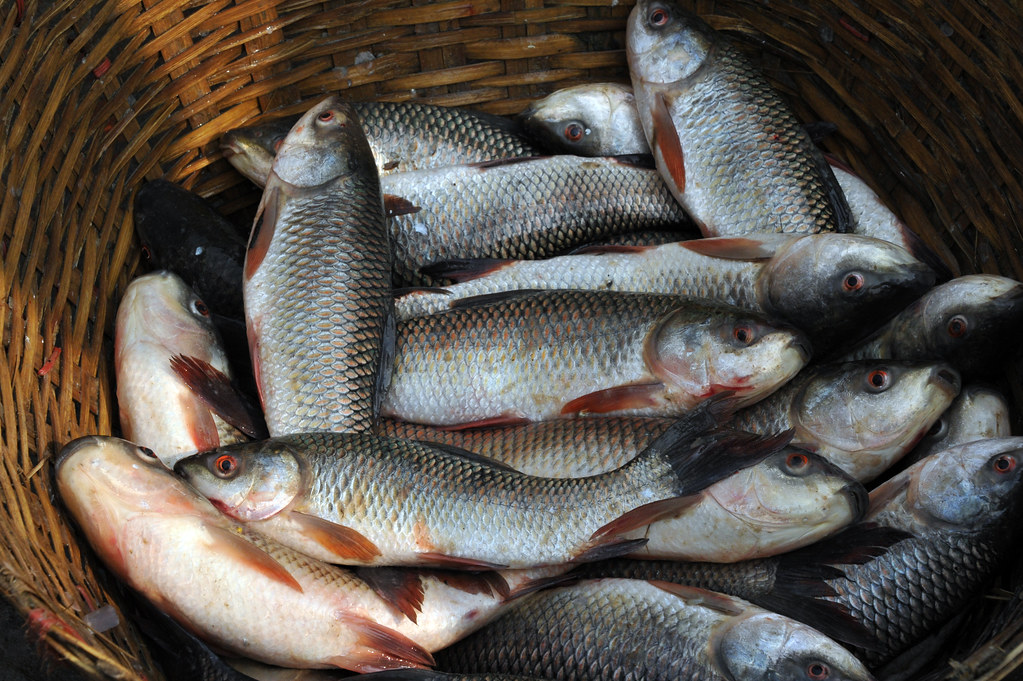Rohu fish, scientifically known as Labeo rohita, is a major freshwater fish species with significant cultural, economic, and culinary importance in South Asia. This amazing fish has attracted the attention of fishermen, biologists, and food lovers for centuries. In this article, we will explore 12 interesting facts about the rohu fish that shed light on its biology, behavior, and importance in the areas where it lives.
Table of Contents
1. Rohu Fish, Diverse Habitats:
Rohu fish is native to the rivers and freshwater bodies of South Asia, especially India, Bangladesh and Pakistan. It thrives in a variety of aquatic environments, from slow-moving rivers to stagnant ponds. Its ability to adapt to different habitats has contributed to its wide distribution.
2. Size matters:
Rohu is one of the largest species of carp, capable of growing to a substantial size. Specimens weighing more than 20 kg have been documented, making it a prized catch among fishermen. These giant rohu individuals demonstrate the impressive growth potential of the fish.
3. Distinctive Appearance:
Identified by its deep-bodied, silvery appearance, the rohu fish is known for its graceful and elongated shape, often with a slightly arched head and dorsal fin . It has got the nickname “Indian Carp” because of its attractive appearance.
4. Herbivorous Diet:
Rohu is primarily herbivorous, its diet consists of aquatic plants, algae and small invertebrates. Its dietary habits make it an essential player in maintaining the ecological balance of freshwater ecosystems. The use of aquatic vegetation helps in controlling the excessive growth of plants.
5. Breeding Behaviour:
Rohu fish generally spawn in the monsoon season when the rivers and ponds are in full spate. They engage in a remarkable courtship ritual that includes elaborate plumage displays and chasing behaviour. This reproductive behavior is an important part of their life cycle and ensures the continuation of the species.
6. Fast Growers:
Rohu fish exhibit rapid growth rates, allowing them to reach marketable size in a relatively short period of time. This characteristic has contributed to its popularity in aquaculture. Fish farmers consider rohu as an economically viable option because of its efficient growth.

7. Cultural Significance:
Rohu fish holds immense cultural significance in South Asian cuisine. It is a staple in various regional cuisines, from traditional curries to grilled preparations. Its delicate, white pulp is prized for its flavor and nutritional value.
8. Aquaculture Advancement:
Due to its rapid growth and adaptability, rohu has become a cornerstone of freshwater aquaculture in South Asia. It contributes significantly to the economy and food security of the region. The development of sustainable aquaculture practices has further boosted its production.
9. High Protein Content:
Rohu fish is a rich source of protein, making it a valuable dietary component for millions of people in South Asia who depend on it as a source of nutrition. Its protein content is essential to meet the dietary needs of the growing population.
10. Sport Fishing:
Apart from its culinary importance, Rohu is a prized fish for recreational fishermen. Fishing for rohu has become a popular sport in South Asian countries, attracting fishing enthusiasts from all over the world. The challenge of catching a large rohu makes it a popular gamefish.
11. Temperature Tolerance:
Rohu fish can tolerate a wide range of water temperatures, making it adaptable to various environmental conditions. This flexibility contributes to its wide distribution, enabling it to thrive in diverse aquatic ecosystems.
12. Sustainable Farming:
Recognizing the ecological and economic importance of Rohu, efforts are underway to promote sustainable farming practices that reduce environmental impact while meeting the growing demand for this species. Sustainable aquaculture ensures long-term availability of rohu without harming the natural ecosystem.
Conclusion:
rohu fish is a remarkable aquatic species that plays an important role in the cultural, economic and ecological fabric of South Asia. Its adaptability, rapid growth and nutritional value have made it a cherished resource for both subsistence and commercial purposes. Whether you are an adventurous fisherman or a culinary lover savoring its delicious flesh, the Rohu fish holds a special place in the hearts and livelihoods of the people of the regions it calls home. Its journey from freshwater habitat to dining table exemplifies its enduring importance.

